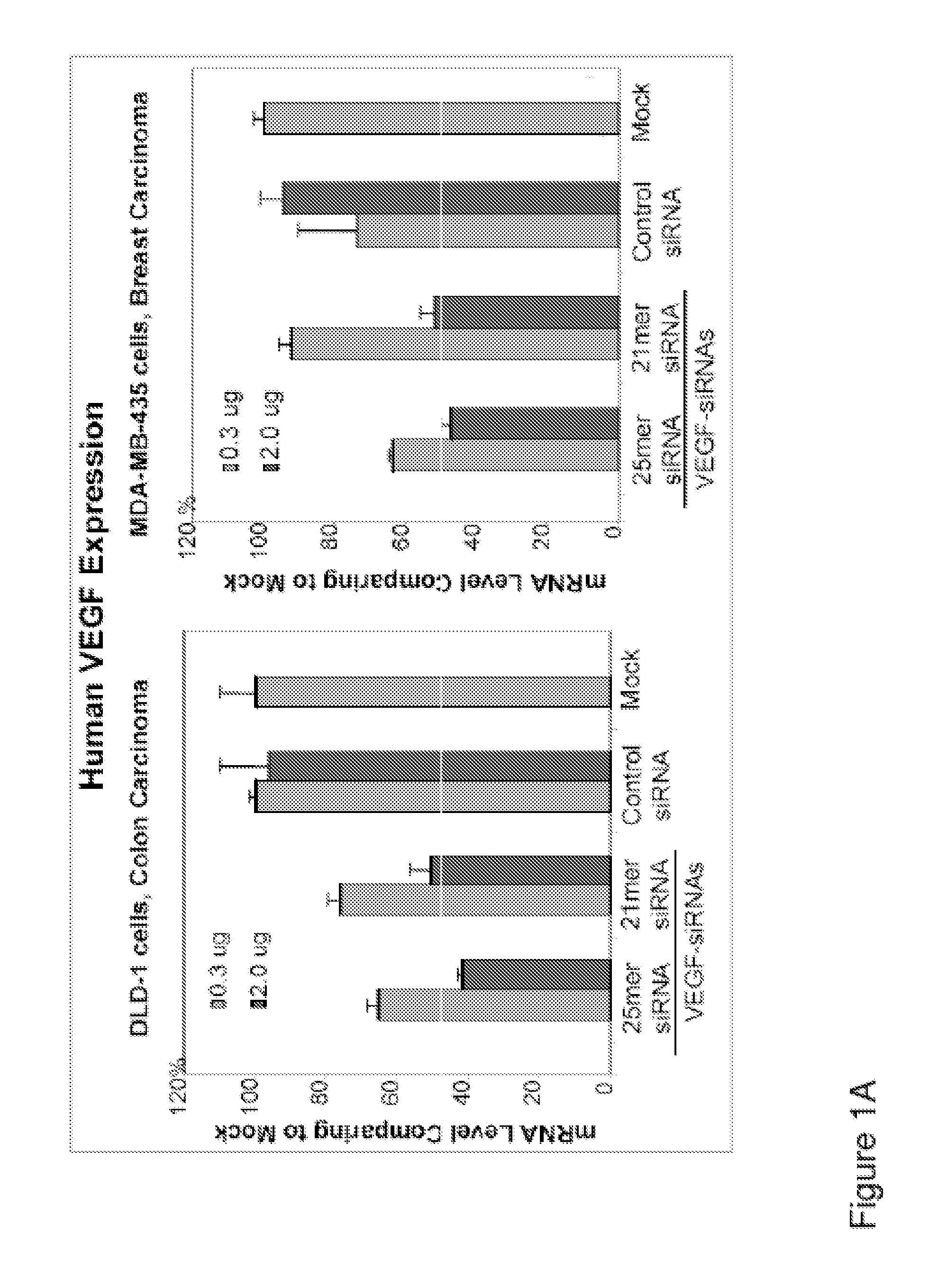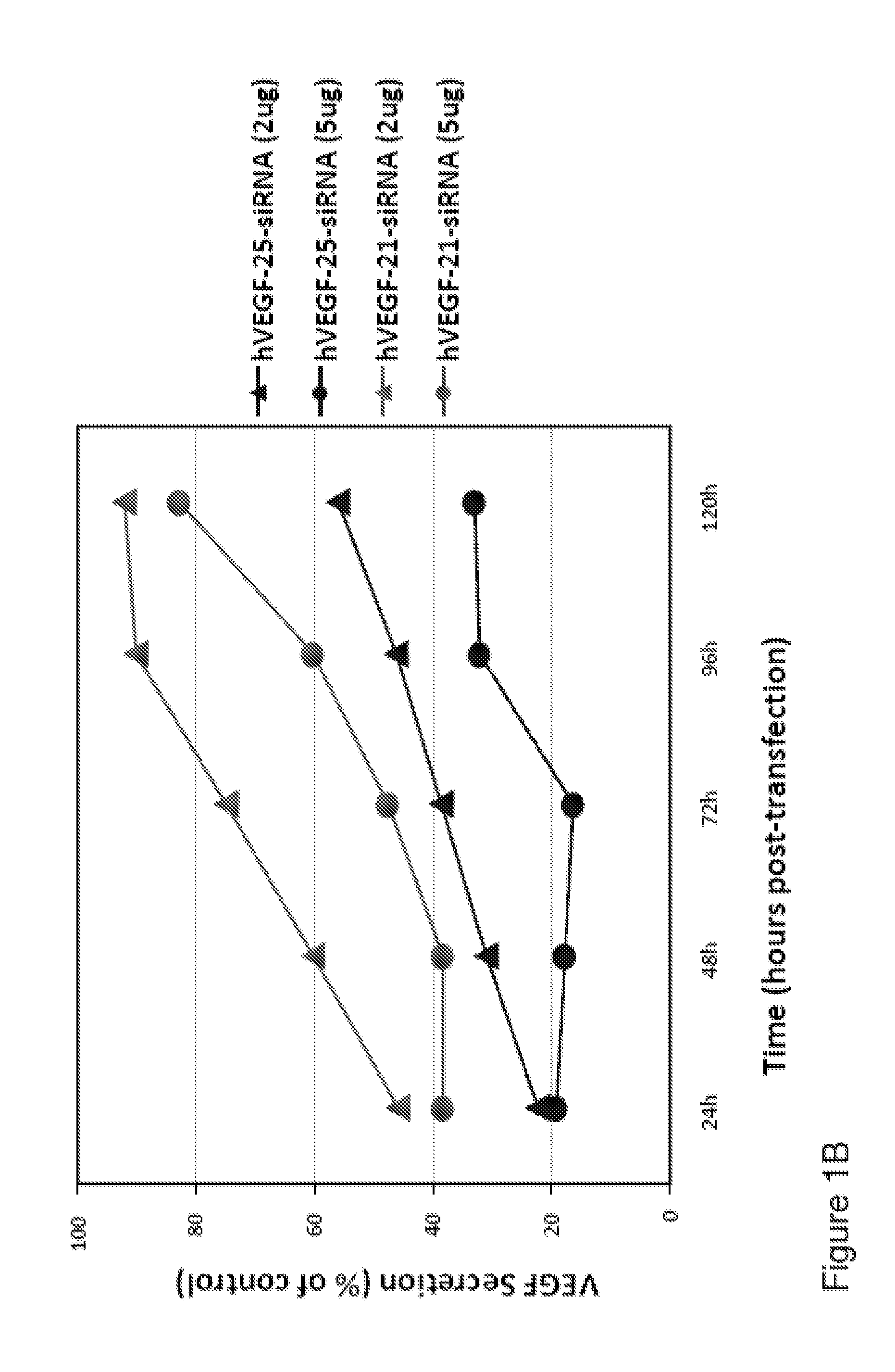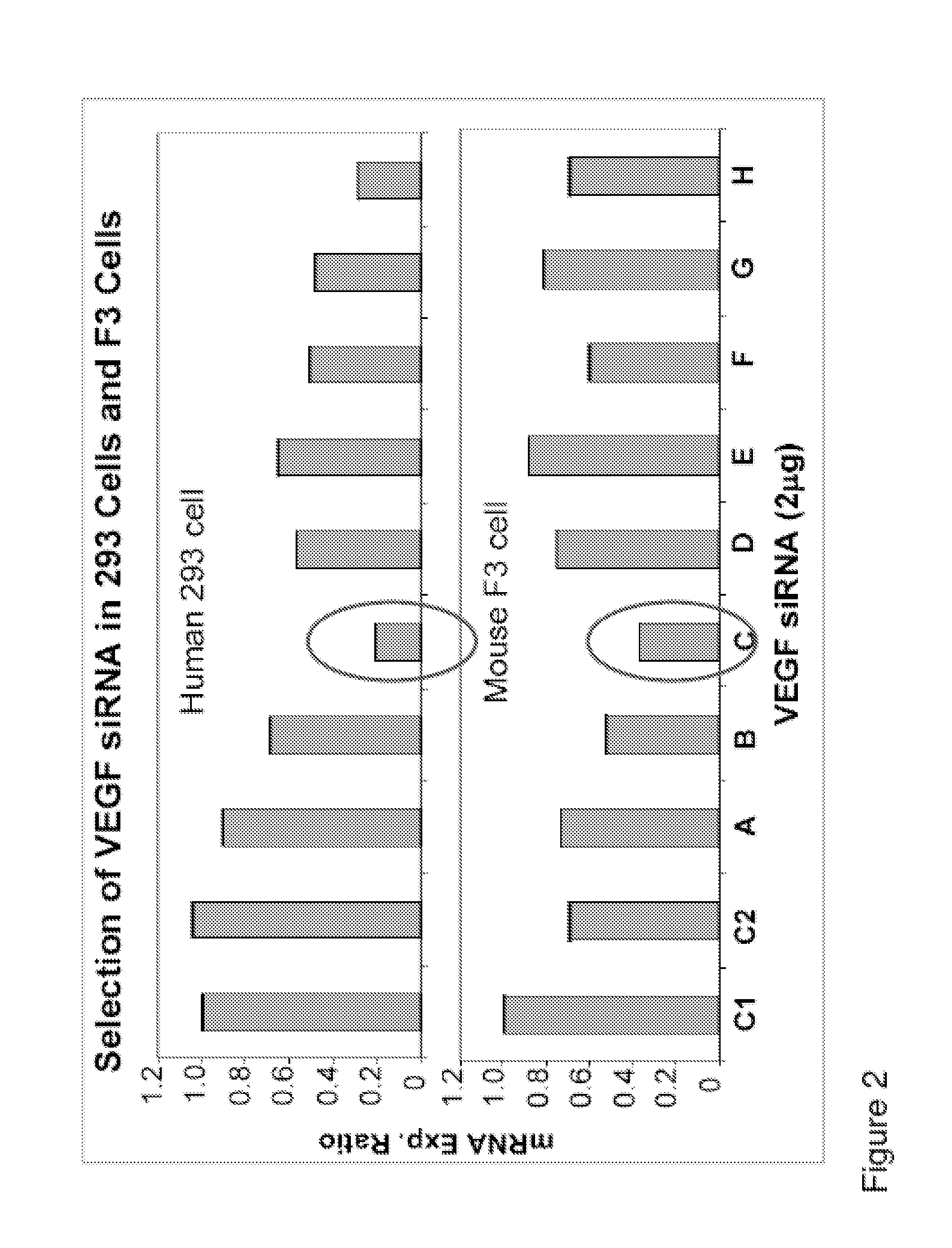Dual Targeted siRNA Therapeutics for Treatment of Diabetic Retinopathy and Other Ocular Neovascularization Diseases
a technology of ocular neovascularization and sirna, which is applied in the field of sirna molecules, compositions, methods for the treatment of diabetic retinopathy and other ocular neovascularization diseases, can solve the problems of vision loss in the working-age population, diabetes retinopathy, and vision loss
- Summary
- Abstract
- Description
- Claims
- Application Information
AI Technical Summary
Benefits of technology
Problems solved by technology
Method used
Image
Examples
example 1
25 Mer siRNA is More Potent than 21 Mer siRNA
[0089]Although the initial studies were mostly utilizing 19mer and 21mer siRNA duplexes synthesized chemically, there is evidence showing that 23mer, 25mer and 27mer siRNA duplexes exhibited more potent silencing effects than the 19mer and 21mer siRNA oligos. The potential interferon pathway activation by longer siRNA oligos (23mer or longer) is a cell type dependent phenomenon. We found that 25mer duplexes with blunt ends are the most potent inhibitors, up to 60% either MBA-MD-435 or DLD-1 cells and in tumor bearing in animals. We have tested a 25mer siRNA duplex targeting human VEGF gene, hVEGF-25c (sense: 5′-CACAACAAAUGUGAAUGCAGACCAA-3′; Antisense: 5′-UUGGUCUGCAUUCACAUUUGUUGUG-3′), comparing to a 21mer siRNA duplex which has been tested many times as one of the most potent VEGF specific inhibitory duplexes, hVEGF-21a (sense: 5′-UCGAGACCCUGGUGGACAUTT-3′; antisense: 5′-AUGUCCACCAGGGUCUCGATT-3′), in the cell culture followed with Q-RT-PCR...
example 2
Selected siRNA is Specific to Both Human and Mouse VEGF mRNAs
[0090]Using an in silico algorithm, we have designed eight siRNA duplex sequences (Table 1) for each gene target with following characteristics: a. optimum thermodynamics; b. enhanced RISC binding; c. eliminated immune stimulation motifs; d. having human and mouse homology; e. intellectual property searched; f. “Off Target” potential blasted and g. can be used as siRNA cocktail. The potent siRNA duplexes targeting each of the targets have followed by Q-RT-PCR (MyiQ, BioRad). The 25 mer siRNA duplexes were synthesized by Qiagen (Germantown, Md.) for in vitro cell culture studies, or by Dharmacon (Bolder, Colo.) at larger quantity for in vivo study with animal disease models. The cell lines used in the studies for potent siRNA selections are due to the target gene expressions in those cells. For example, both human 293 cells and mouse F3 cells were used for selection of VEGF specific siRNA duplex (FIG. 2). The most potent si...
example 3
Selected siRNA is specific to both human and mouse VEGFR2 mRNAs
[0091]Using the in silico algorithm, we have designed eight siRNA duplex sequences (Table 2) for each gene targets with following characteristics: a. optimum thermodynamics; b. enhanced RISC binding; c. eliminated immune stimulation motifs; d. having human and mouse homology; e. intellectual property searched; f. “Off Target” potential blasted and g. can be used as siRNA cocktail. The 25 mer siRNA duplexes were synthesized by Qiagen (Germantown, Md.) for in vitro cell culture studies, or by Dharmacon (Bolder, Colo.) at larger quantity for in vivo study with animal disease models. The cell lines used in the studies for potent siRNA selections are due to the target gene expressions in those cells. The mouse SVR cells were transfected with siRNA duplexes followed by RNA isolation and Q-RT-PCR (FIG. 3A). The human HUVEC cells were transfected with siRNA followed by protein isolation and ELISA (FIG. 3B). These two assays were...
PUM
| Property | Measurement | Unit |
|---|---|---|
| size | aaaaa | aaaaa |
| diameter | aaaaa | aaaaa |
| time points | aaaaa | aaaaa |
Abstract
Description
Claims
Application Information
 Login to View More
Login to View More - R&D
- Intellectual Property
- Life Sciences
- Materials
- Tech Scout
- Unparalleled Data Quality
- Higher Quality Content
- 60% Fewer Hallucinations
Browse by: Latest US Patents, China's latest patents, Technical Efficacy Thesaurus, Application Domain, Technology Topic, Popular Technical Reports.
© 2025 PatSnap. All rights reserved.Legal|Privacy policy|Modern Slavery Act Transparency Statement|Sitemap|About US| Contact US: help@patsnap.com



